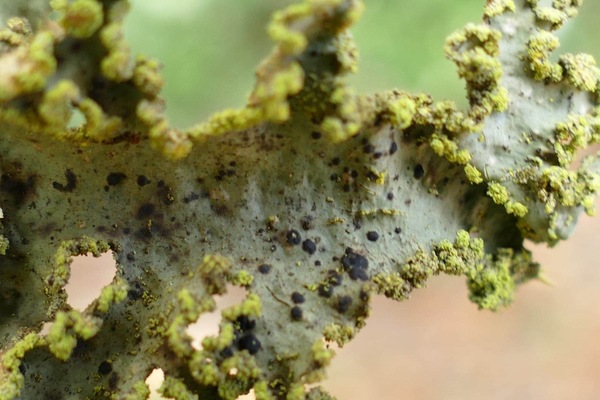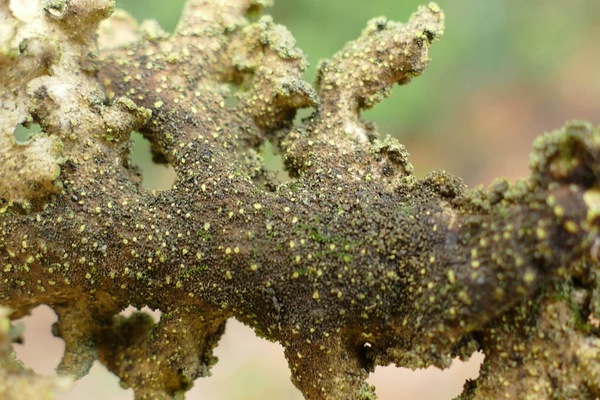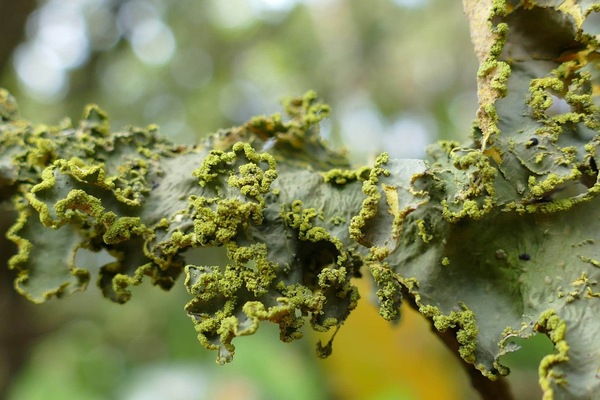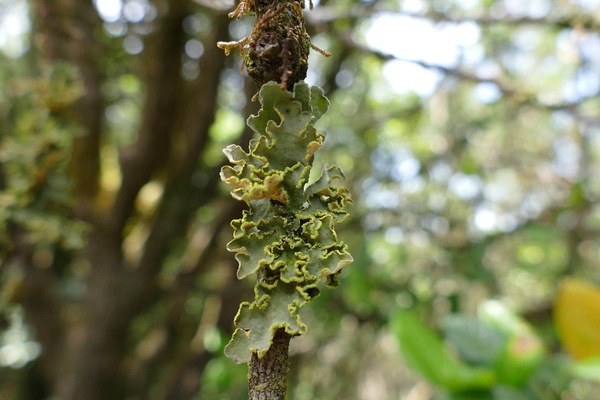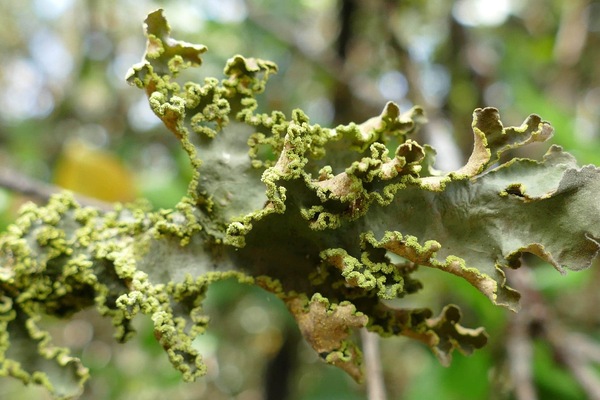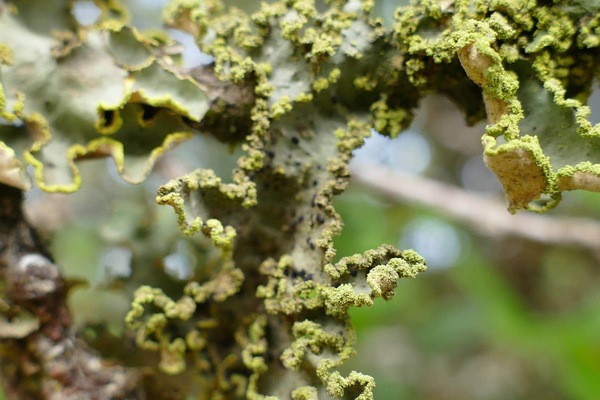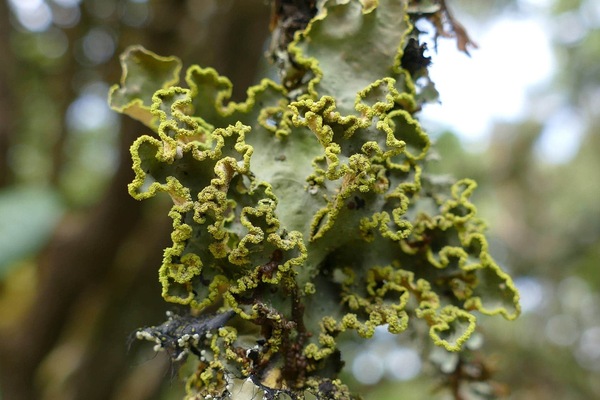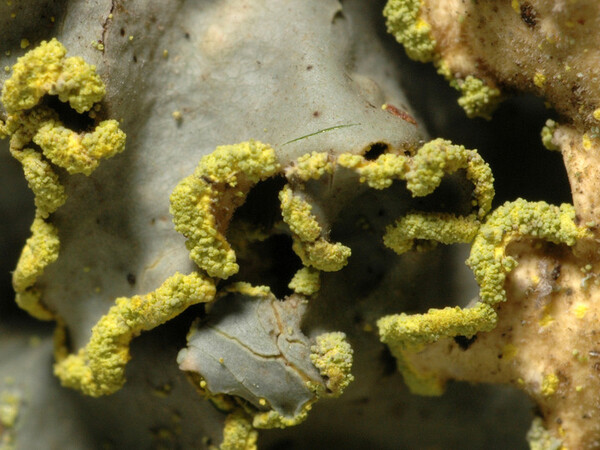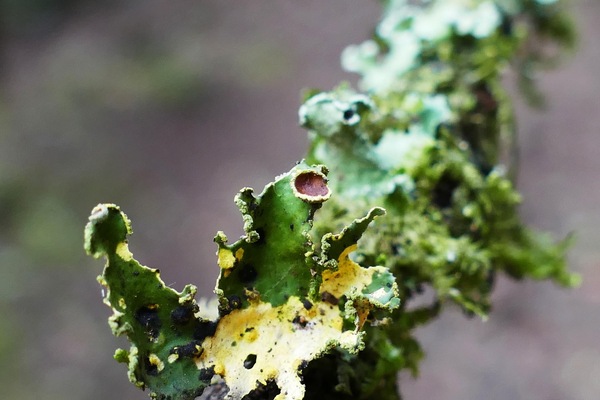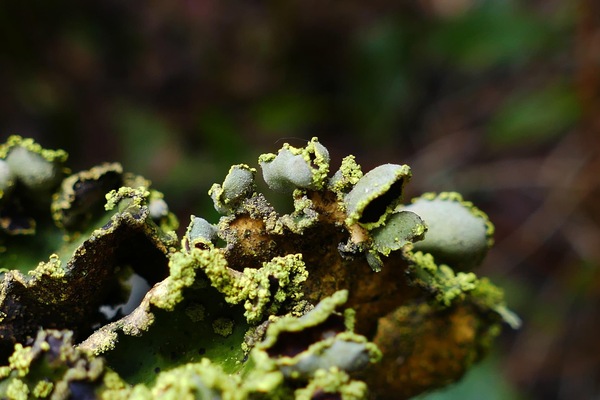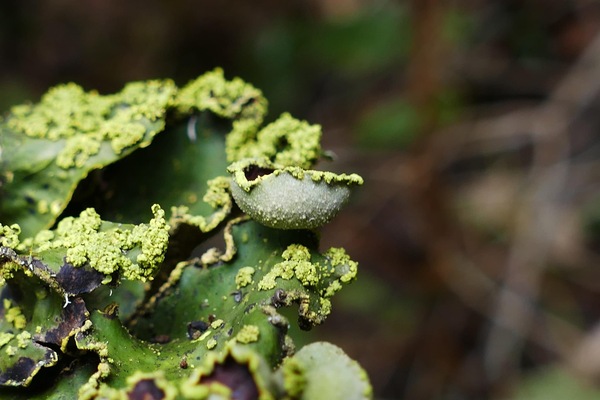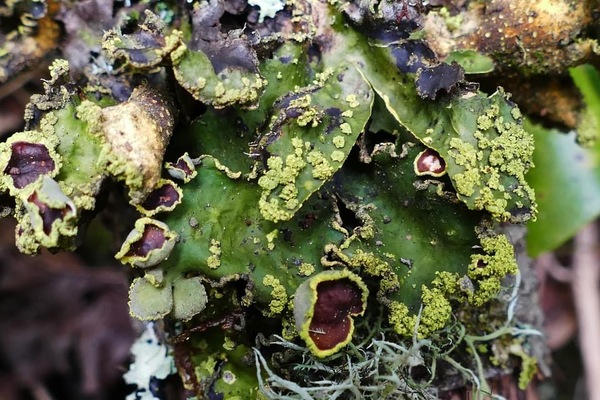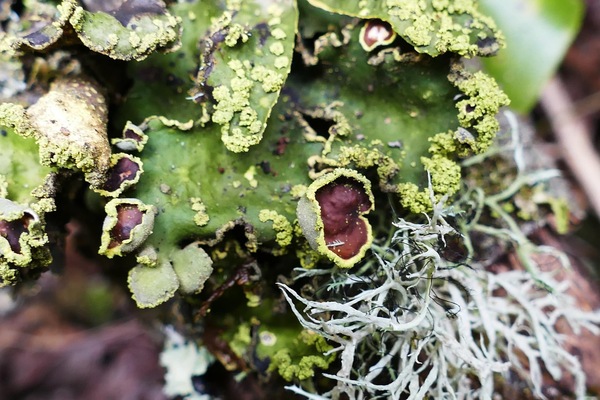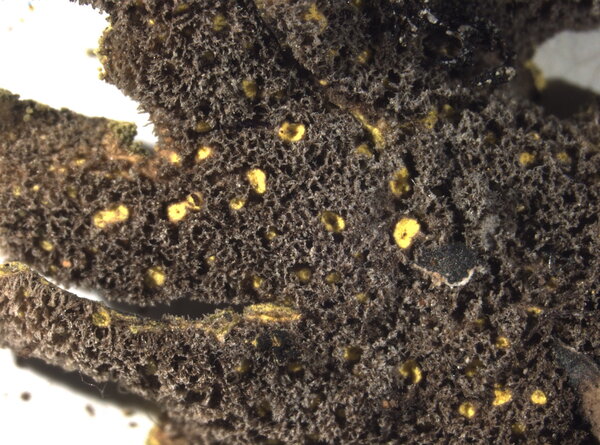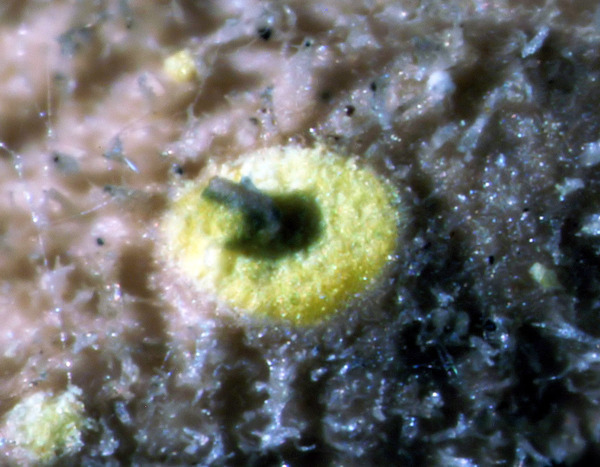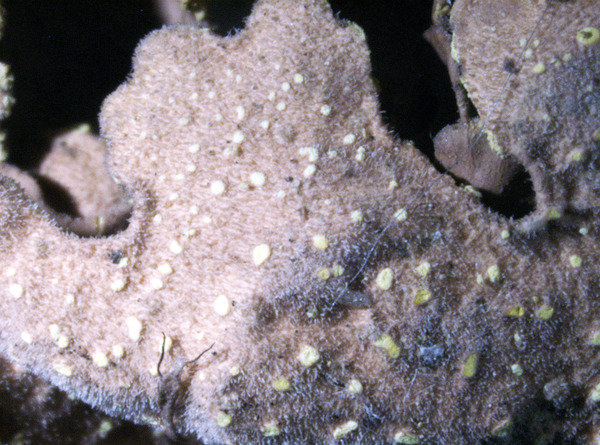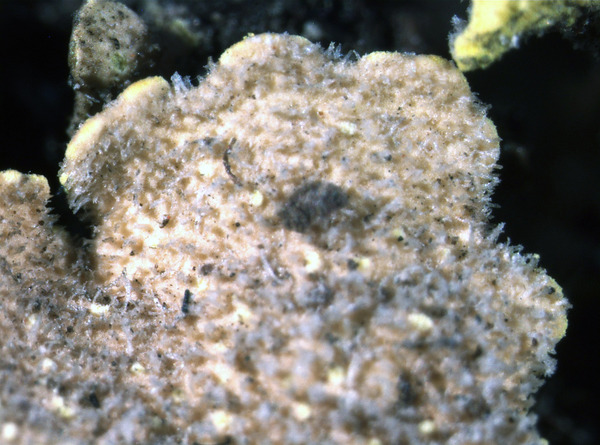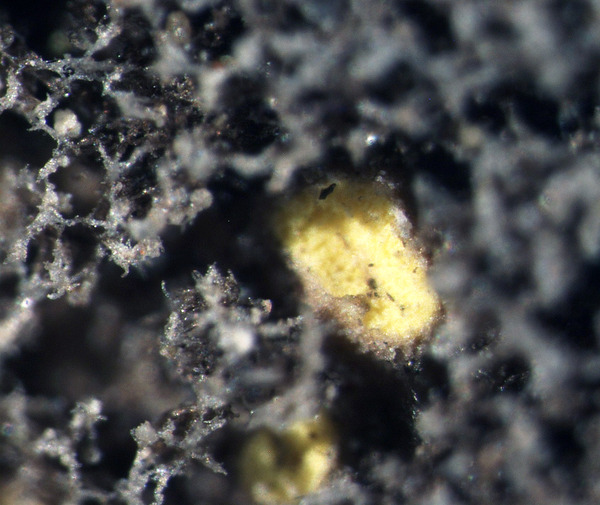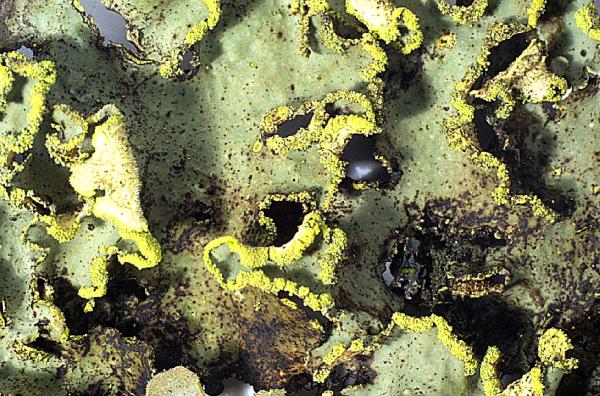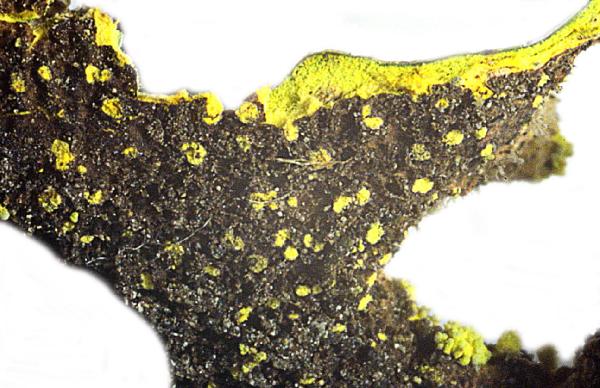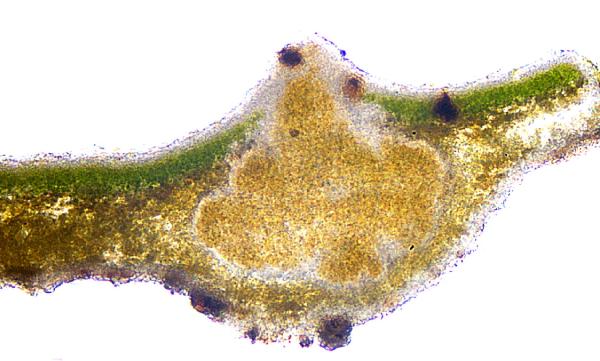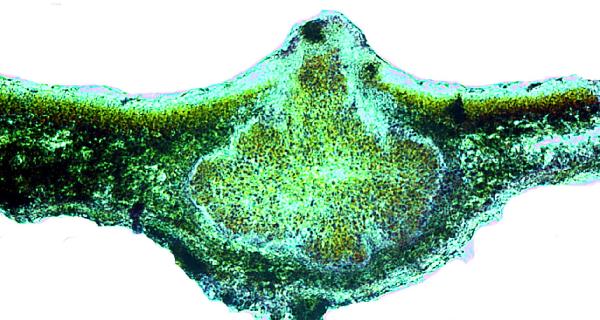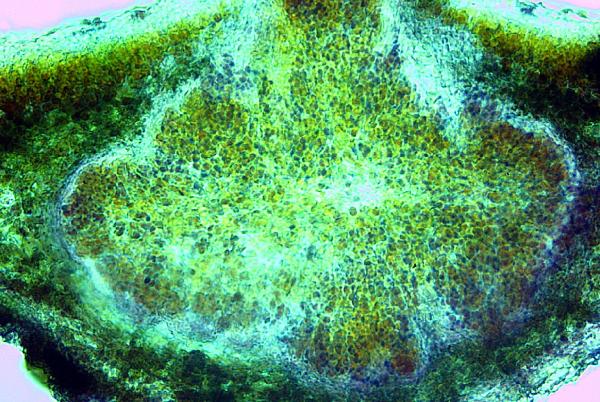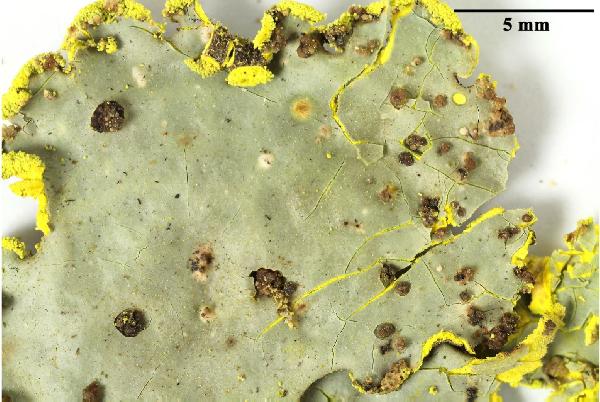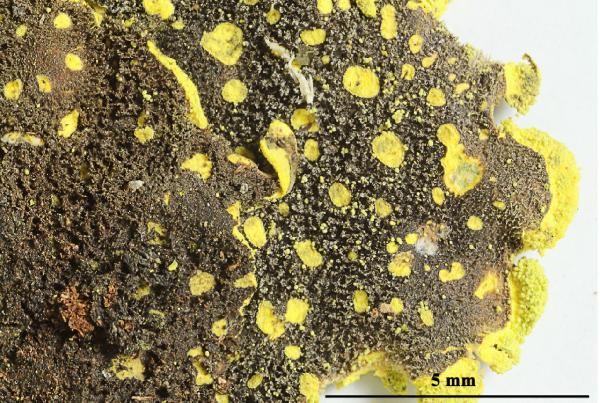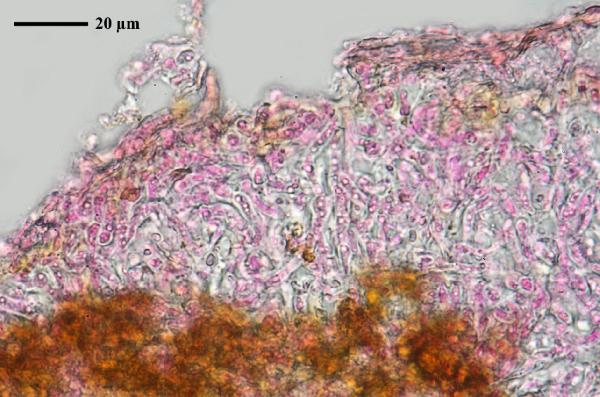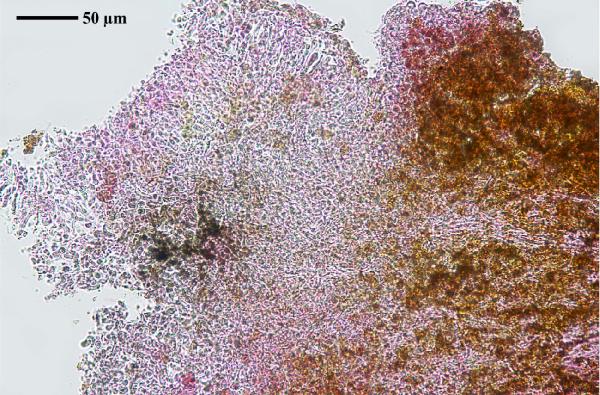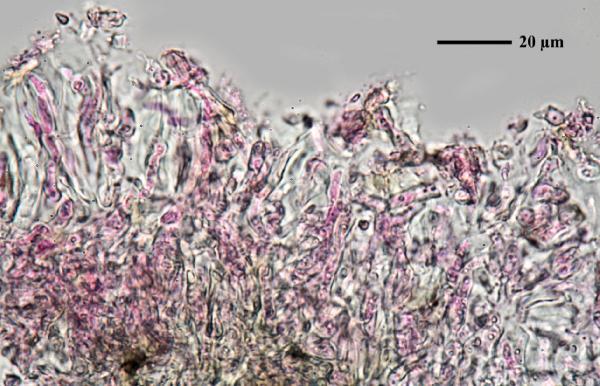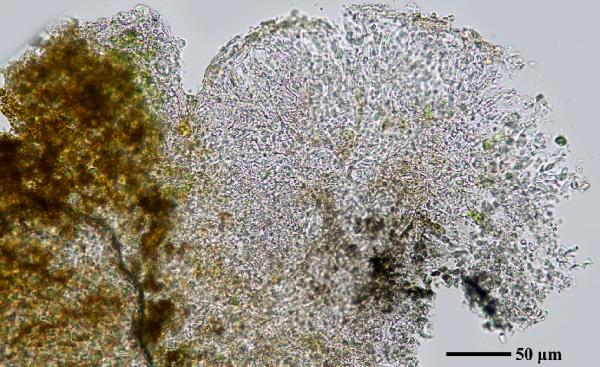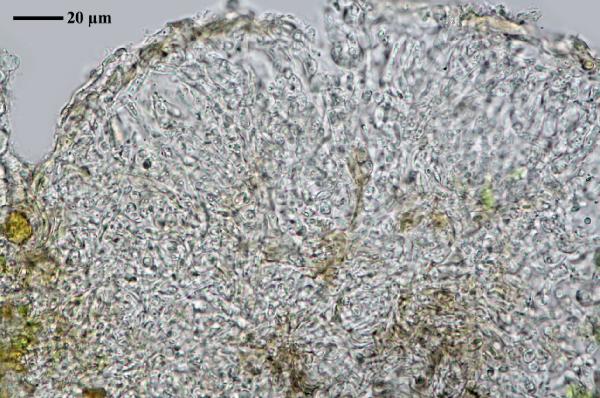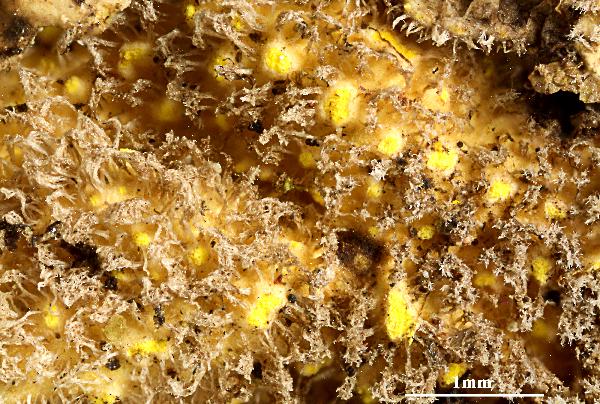Crocodia aurata (Ach.) Link
Handb. zur Erkennt. nutz. Gew., 3: 177, 1833. Basionym: Sticta aurata Ach. - Meth. Lich.: 277, 1803.
Synonyms: Pseudocyphellaria aurata (Ach.) Vain.
Distribution: S - Pugl, Si.
Description: Thallus foliose, heteromerous, dorsiventral, broad-lobed, forming 7-15 cm wide, orbicular to irregular rosettes, the lobes (3-)5-15 mm wide, up to 30 mm long, rounded, contiguous in marginal parts, imbricate in central parts, becoming undulate, often partly scabrid-areolate, the tips ascending and sometimes shortly and thinly hairy, bright green when wet, grey to olive-green when dry. Soralia abundant, almost exclusively marginal and linear, bright yellow, with granular soredia. Lower surface thinly tomentose, pale towards margins, darker in central parts, with bright yellow, 0.1-0.6 mm wide pseudocyphellae that often reach the margins. Upper cortex of anticlinally oriented, thick-walled hyphae; medulla bright yellow throughout. Apothecia extremely rare, submarginal, glabrous, with an epruinose disc and a distinct thalline margin. Asci 8-spored, Peltigera-type. Ascospores 3-septate, brown, 25-30 x 6-8 μm. Photobiont chlorococcoid (Dictyochloropsis). Spot tests: cortex and medulla K-, C-, KC-, P-; medulla UV+ orange or salmon-pink. Chemistry: calycin, pulvinic acid, pulvinic dilactone, fernene triterpenoids.Note: an oceanic-subtropical species of moist, warm, open forests, most probably extinct in Italy. The most recent record dates back to 1923 (Marche), with a record by Jatta from Abruzzo (Nimis 1993: 579): both records, from the eastern side of the Peninsula, being dubious are not accepted here. However, the species was also reported from warm-humid areas of Southern Italy (Gargano-Puglia, and Sicily) by Flotow and Rabenhorst (Nimis 1993: 579). In Southern Italy there are warm-humid sites which could have hosted this species.
Growth form: Foliose, broad lobed
Substrata: bark
Photobiont: green algae other than Trentepohlia
Reproductive strategy: mainly asexual, by soredia, or soredia-like structures (e.g. blastidia)
Restricted to humid-warm, oceanic areas
Commonnes-rarity: (info)
Alpine belt: absent
Subalpine belt: absent
Oromediterranean belt: absent
Montane belt: absent
Submediterranean belt: absent
Padanian area: absent
Humid submediterranean belt: absent
Humid mediterranean belt: extremely rare
Dry mediterranean belt: absent
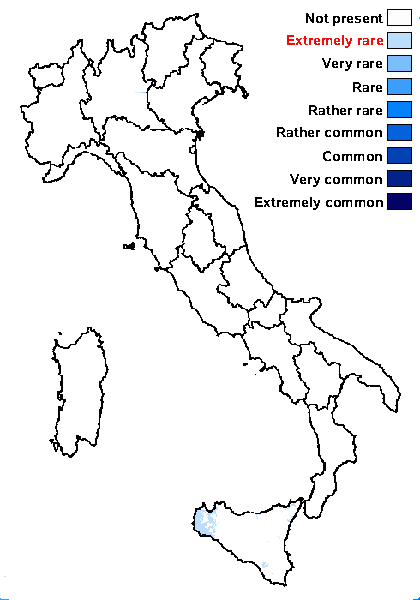
Predictive model
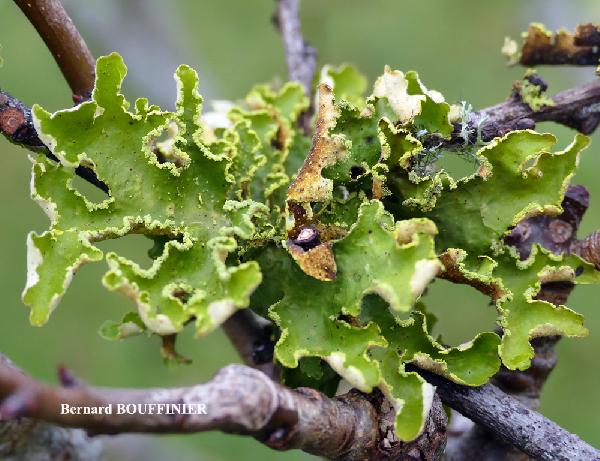
Bernard Bouffinier - Source: http://www.lichensmaritimes.org/index.php?task=fiche&lichen=374&lang=en
Spain, Canary Islands, Tenerife
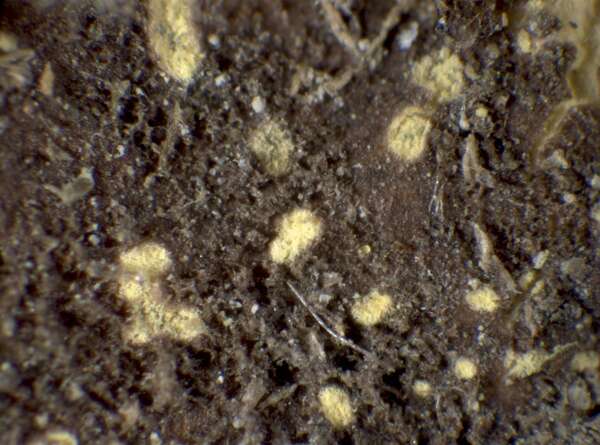

P.L. Nimis; Owner: Department of Life Sciences, University of Trieste
Herbarium: TSB (20901)
2002/02/23
lower surface with pseudocyphellae
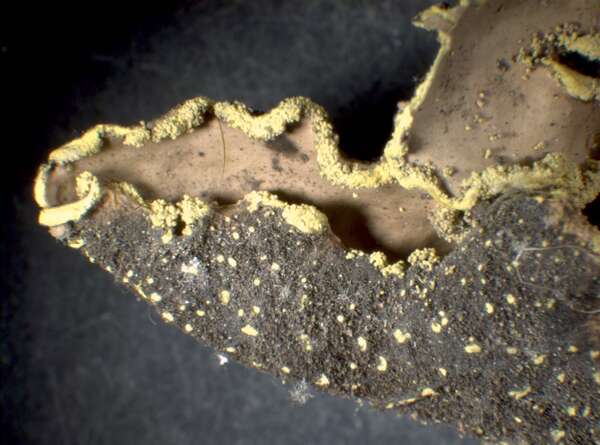

P.L. Nimis; Owner: Department of Life Sciences, University of Trieste
Herbarium: TSB (20901)
2002/02/23
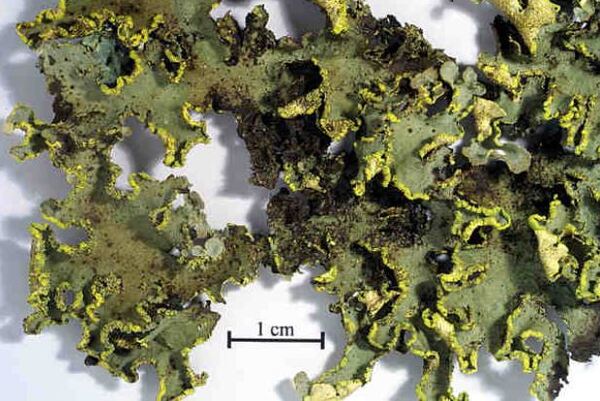

Felix Schumm – CC BY-SA 4.0
Image from: F. Schumm (2008) - Flechten Madeiras, der Kanaren und Azoren. Beck, OHG - ISBN: 978-3-00-023700-3
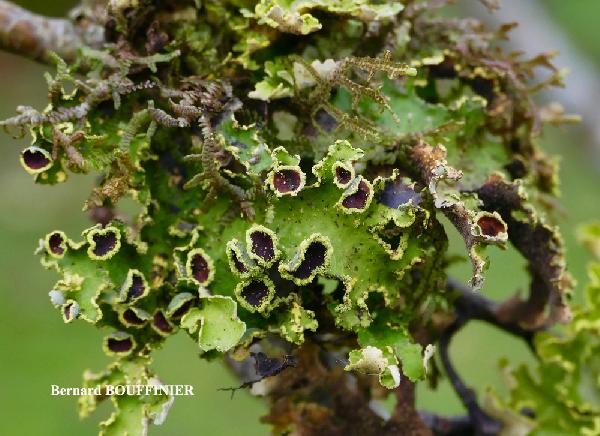
Bernard Bouffinier - Source: http://www.lichensmaritimes.org/index.php?task=fiche&lichen=374&lang=en
Spain, Canary Islands, Tenerife
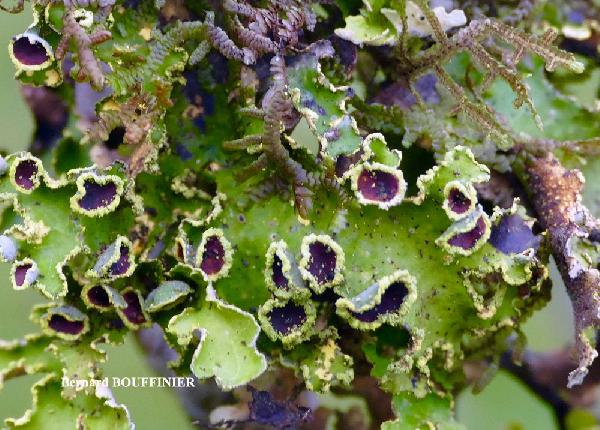
Bernard Bouffinier - Source: http://www.lichensmaritimes.org/index.php?task=fiche&lichen=374&lang=en
Spain, Canary Islands, Tenerife
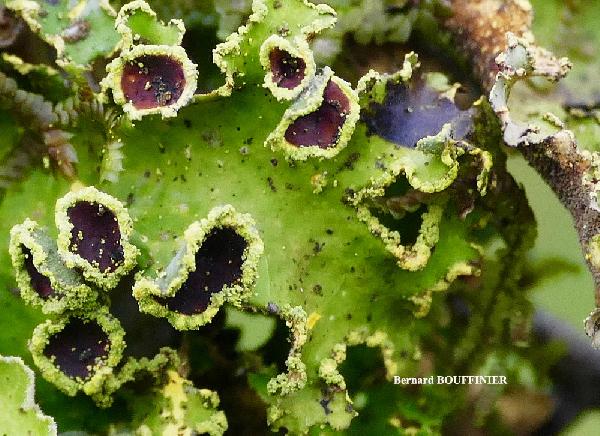
Bernard Bouffinier - Source: http://www.lichensmaritimes.org/index.php?task=fiche&lichen=374&lang=en
Spain, Canary Islands, Tenerife
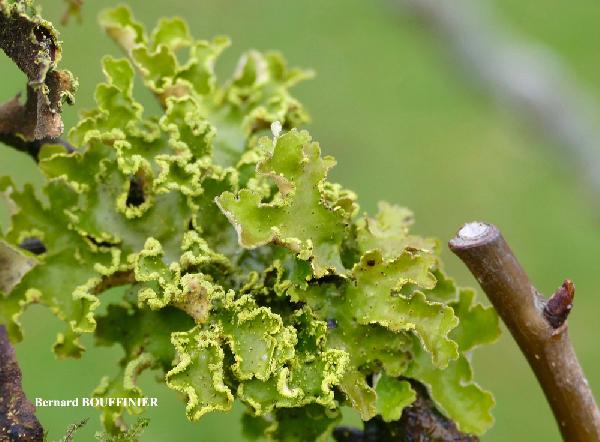
Bernard Bouffinier - Source: http://www.lichensmaritimes.org/index.php?task=fiche&lichen=374&lang=en
Spain, Canary Islands, Tenerife

Bernard Bouffinier - Source: http://www.lichensmaritimes.org/index.php?task=fiche&lichen=374&lang=en
Spain, Canary Islands, Tenerife

Bernard Bouffinier - Source: http://www.lichensmaritimes.org/index.php?task=fiche&lichen=374&lang=en
Spain, Canary Islands, Tenerife

Jacques Haine - Source: http://www.lichensmaritimes.org/index.php?task=fiche&lichen=374&lang=en
Spain, Canary Islands, Tenerife
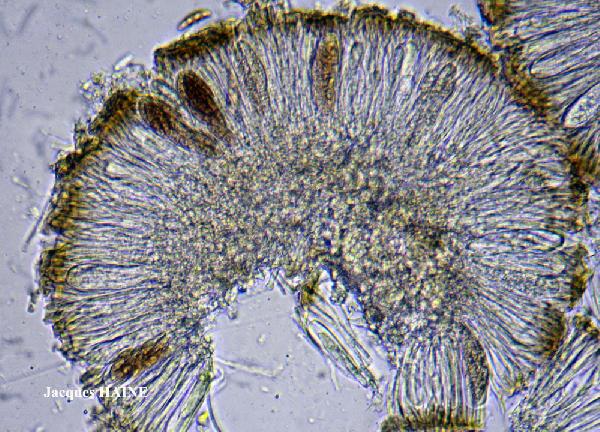
Jacques Haine - Source: http://www.lichensmaritimes.org/index.php?task=fiche&lichen=374&lang=en
Spain, Canary Islands, Tenerife

Jacques Haine - Source: http://www.lichensmaritimes.org/index.php?task=fiche&lichen=374&lang=en
Spain, Canary Islands, Tenerife
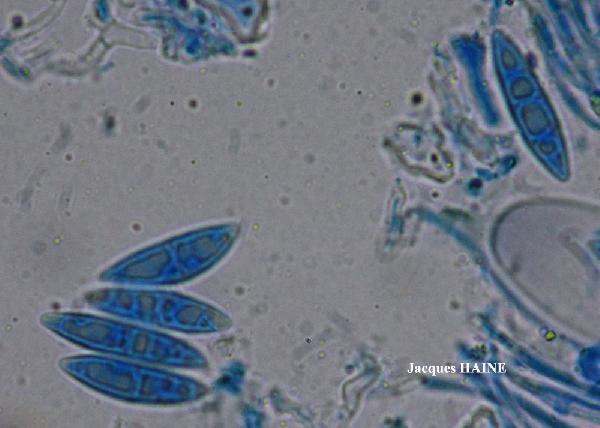
Jacques Haine - Source: http://www.lichensmaritimes.org/index.php?task=fiche&lichen=374&lang=en
Spain, Canary Islands, Tenerife
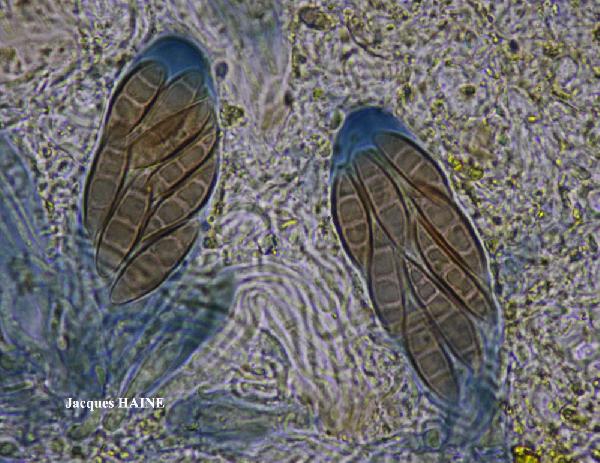
Jacques Haine - Source: http://www.lichensmaritimes.org/index.php?task=fiche&lichen=374&lang=en
Spain, Canary Islands, Tenerife
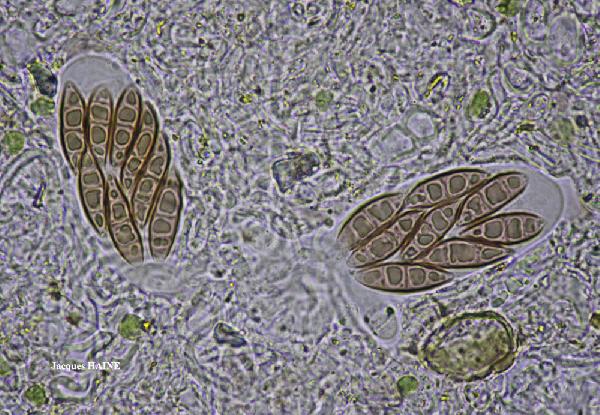
Jacques Haine - Source: http://www.lichensmaritimes.org/index.php?task=fiche&lichen=374&lang=en
Spain, Canary Islands, Tenerife
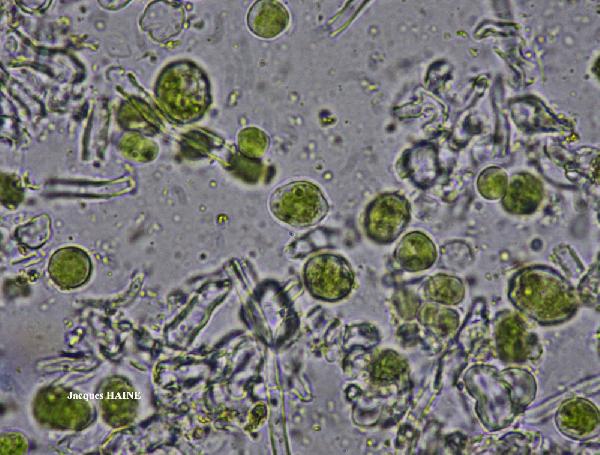
Jacques Haine - Source: http://www.lichensmaritimes.org/index.php?task=fiche&lichen=374&lang=en
Spain, Canary Islands, Tenerife
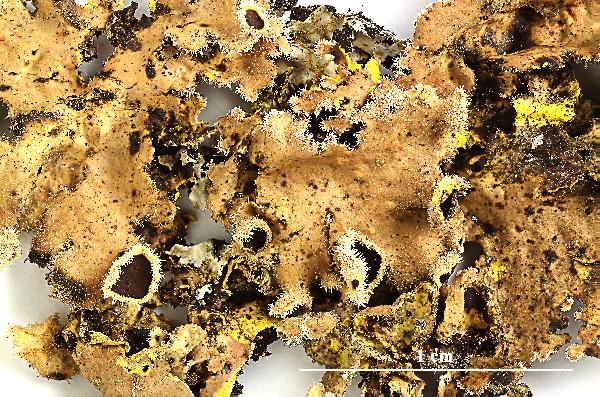

Felix Schumm - CC BY-SA 4.0
[ABL42480], Brazil, Alagoas, Quebrangulo, Pedra Talhada private
area. In Atlantic rain forest on tree bark. 9°15’ S, 36°25’35’’ W, 500-700
m. Leg. M. Cáceres & A. Aptroot (no 42480), 21-23.10.2017. Det. A.
Aptroot, 2017.
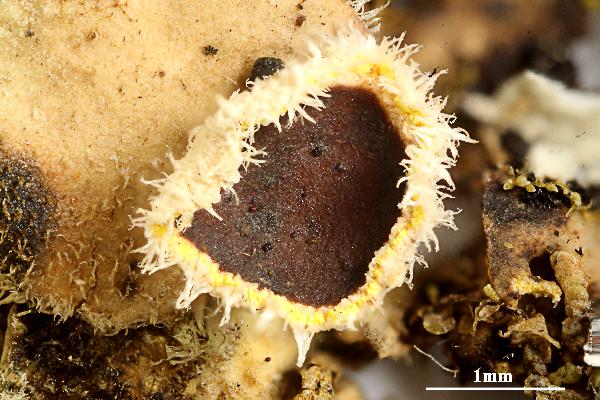

Felix Schumm - CC BY-SA 4.0
[ABL42480], Brazil, Alagoas, Quebrangulo, Pedra Talhada private
area. In Atlantic rain forest on tree bark. 9°15’ S, 36°25’35’’ W, 500-700
m. Leg. M. Cáceres & A. Aptroot (no 42480), 21-23.10.2017. Det. A.
Aptroot, 2017.
Growth form: Foliose, broad lobed
Substrata: bark
Photobiont: green algae other than Trentepohlia
Reproductive strategy: mainly asexual, by soredia, or soredia-like structures (e.g. blastidia)
Restricted to humid-warm, oceanic areas
Commonnes-rarity: (info)
Alpine belt: absent
Subalpine belt: absent
Oromediterranean belt: absent
Montane belt: absent
Submediterranean belt: absent
Padanian area: absent
Humid submediterranean belt: absent
Humid mediterranean belt: extremely rare
Dry mediterranean belt: absent

Predictive model

Bernard Bouffinier - Source: http://www.lichensmaritimes.org/index.php?task=fiche&lichen=374&lang=en
Spain, Canary Islands, Tenerife


P.L. Nimis; Owner: Department of Life Sciences, University of Trieste
Herbarium: TSB (20901)
2002/02/23
lower surface with pseudocyphellae


P.L. Nimis; Owner: Department of Life Sciences, University of Trieste
Herbarium: TSB (20901)
2002/02/23


Felix Schumm – CC BY-SA 4.0
Image from: F. Schumm (2008) - Flechten Madeiras, der Kanaren und Azoren. Beck, OHG - ISBN: 978-3-00-023700-3

Bernard Bouffinier - Source: http://www.lichensmaritimes.org/index.php?task=fiche&lichen=374&lang=en
Spain, Canary Islands, Tenerife

Bernard Bouffinier - Source: http://www.lichensmaritimes.org/index.php?task=fiche&lichen=374&lang=en
Spain, Canary Islands, Tenerife

Bernard Bouffinier - Source: http://www.lichensmaritimes.org/index.php?task=fiche&lichen=374&lang=en
Spain, Canary Islands, Tenerife

Bernard Bouffinier - Source: http://www.lichensmaritimes.org/index.php?task=fiche&lichen=374&lang=en
Spain, Canary Islands, Tenerife

Bernard Bouffinier - Source: http://www.lichensmaritimes.org/index.php?task=fiche&lichen=374&lang=en
Spain, Canary Islands, Tenerife

Bernard Bouffinier - Source: http://www.lichensmaritimes.org/index.php?task=fiche&lichen=374&lang=en
Spain, Canary Islands, Tenerife

Jacques Haine - Source: http://www.lichensmaritimes.org/index.php?task=fiche&lichen=374&lang=en
Spain, Canary Islands, Tenerife

Jacques Haine - Source: http://www.lichensmaritimes.org/index.php?task=fiche&lichen=374&lang=en
Spain, Canary Islands, Tenerife

Jacques Haine - Source: http://www.lichensmaritimes.org/index.php?task=fiche&lichen=374&lang=en
Spain, Canary Islands, Tenerife

Jacques Haine - Source: http://www.lichensmaritimes.org/index.php?task=fiche&lichen=374&lang=en
Spain, Canary Islands, Tenerife

Jacques Haine - Source: http://www.lichensmaritimes.org/index.php?task=fiche&lichen=374&lang=en
Spain, Canary Islands, Tenerife

Jacques Haine - Source: http://www.lichensmaritimes.org/index.php?task=fiche&lichen=374&lang=en
Spain, Canary Islands, Tenerife

Jacques Haine - Source: http://www.lichensmaritimes.org/index.php?task=fiche&lichen=374&lang=en
Spain, Canary Islands, Tenerife


Felix Schumm - CC BY-SA 4.0
[ABL42480], Brazil, Alagoas, Quebrangulo, Pedra Talhada private area. In Atlantic rain forest on tree bark. 9°15’ S, 36°25’35’’ W, 500-700 m. Leg. M. Cáceres & A. Aptroot (no 42480), 21-23.10.2017. Det. A. Aptroot, 2017.


 INDEX FUNGORUM
INDEX FUNGORUM
 GBIF
GBIF

